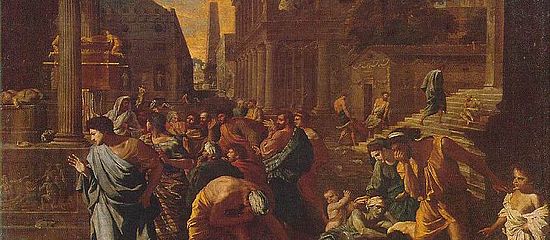
SNSF-Project: The Roman Egypt LaboratoryClimate Change, Societal Transformations, and the Transition to Late Antiquity
Subprojects
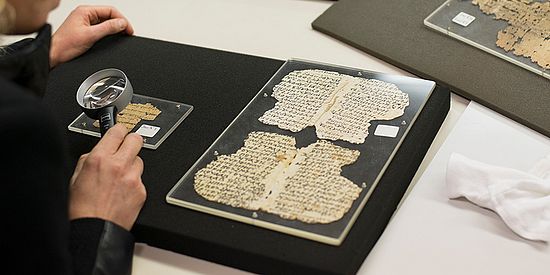
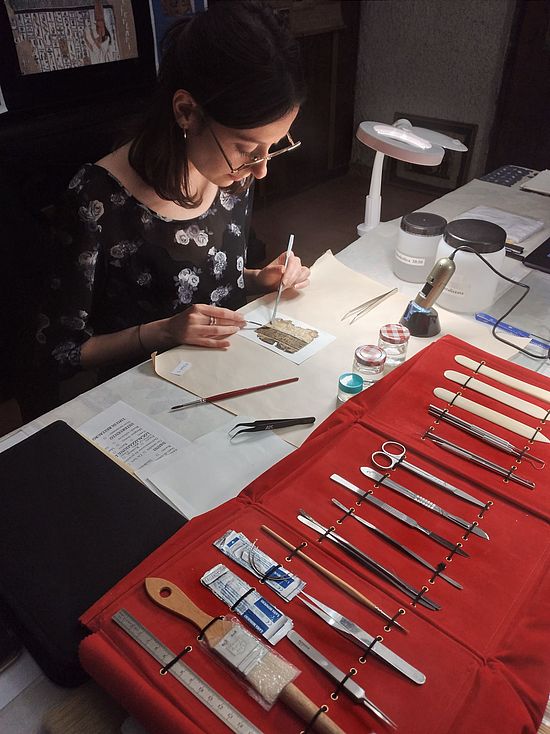
Papyrological Subproject: Sara Baldin
Sara is a papyrologist from the University of Bologna and is pursuing a PhD in Ancient History at the University of Basel under the supervision of Sabine Huebner. Her PhD dissertation project will be devoted to trace the influence of changing environmental conditions on the agrarian economy during the Roman period of Egypt (with a focus on the third century CE) by using mainly papyrological evidence. Primarily tied to wheat production, the agricultural economy of Roman Egypt has been of rising interest in scholarship in recent years. Next to northern Africa and Sicily, Egypt was the principal source of grain for the population of Rome and the Roman military, but as a result to its rich papyrological evidence Egypt yields considerably more detailed sources than its two sister regions. By using this depth of information not available for other regions of the ancient Mediterranean, this PhD project will be an example of incorporating climate history into the study of the ancient agrarian economy, and also establish a model how ancient economies generally responded to environmental shocks.
Since Roman Egypt’s economy was strongly based on agriculture revolving essentially around the Mediterranean basin, the analysis will depart from, and concentrate on, the Mediterranean triad: Wheat, wine and oil. These commodities, staples in the everyday diet of all social classes, were produced and sold in huge quantities and therefore much evidence remains in the papyrological corpus about their economy. Considering the central role played by such a market and its prospect of being significantly exposed to any climatic change, the study will take into account not only the products themselves, but will include any other data somehow related such as manufacturing facilities e.g., oil presses and mills, contracts of lease and sale for plots of land intended for cultivation of such staples, commodities frequently mentioned as trade goods in transactions involving them.


Archaeological Subproject: Dr. Brandon T. McDonald
The archaeological subproject of the Roman Egypt Laboratory gathers archaeological data – architectural, ceramic, numismatic, skeletal, archaeobotanical, etc. – from the late Ptolemaic period to the late Roman period in Egypt, cataloguing the evidence in our project database. In doing so, our Postdoc Dr Brandon McDonald aims to identify and investigate settlements exhibiting contraction and/or abandonment in the archaeological record, with particular focus on the late second and third centuries CE. After which, he works to distinguish the most likely causes of apparent decline – whether it be sociopolitical upheaval, geopolitical conflict, climate or environmental change, financial turmoil, infectious disease, or something else. Towards the end of research on a particular area, he writes up his findings as articles for submission to international journals.
So far, Brandon conducted research on the archaeology of the Eastern Desert of Egypt, the Western Desert of Egypt, and has begun research on the Nile Delta. It is apparent in the archaeological record that the Eastern Desert experienced a major period of settlement contraction beginning in the late second century CE and continuing into late antiquity, with the region never having returned to the level of prosperity observed in the early Roman period. After research, it seems clear that the cause of the Eastern Desert’s contraction was not monocausal, and most likely included geopolitical unrest, socio-political upheaval, the indirect of effects of two pandemics, and possibly climatic and environmental change. In the Western Desert, the archaeological record does not provide us with a conspicuous picture. What is clear is that certain sites – in particular, those of the Dakhla, Kharga and Bahariya oases – underwent phases of environmental degradation in the middle Roman period (150-300 CE); however, whether that degradation was the result of climatic change or anthropogenic forcing (i.e., intensive Roman water management and cultivation techniques) is not entirely clear. As for the Nile Delta, research is in the very early stages, and there are a number of archaeological sites and reports to sift through; but, given the seeming abundance of data and the importance of the location, Brandon is confident that there will be an interesting story to tell.
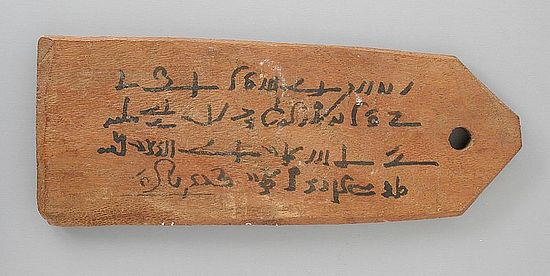
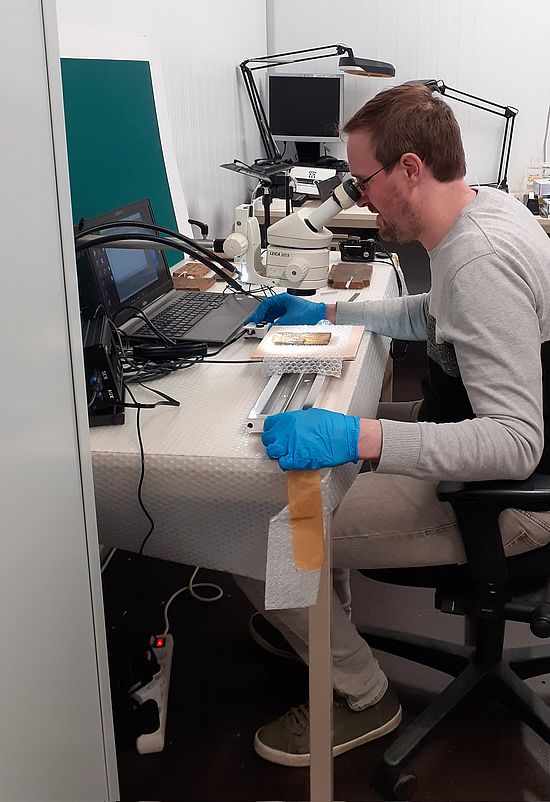
Palaeoclimatological Subproject: Dr. François Blondel
The palaeoclimatological sub-project of the Roman Egypt Laboratory consists in measuring the ring widths of archaeological wood, dating from the late Ptolemaic to the late Roman period, found today in many museum collections worldwide. In doing so, our post-doctoral student, Dr François Blondel, aims to produce the first dendrochronological reference of the Eastern Mediterranean basin in the Roman period, in order to offer a climatic reading of this part of the Empire based on the fluctuations of tree-ring widths of different tree species. Indeed, trees are natural archives that record a great deal of environmental information, including precipitation and temperature. François is publishing the results of his work in several forthcoming articles in international peer-reviewed journals.
So far, François has consulted numerous collections of Graeco-Roman wood in museums around the world. Although his studies initially focused mainly on mummy labels, the range of archaeological objects consulted has expanded to include other objects, notably mummy portraits. Unfortunately, the dendrochronological potential of the species endemic to Egypt, although well represented in the corpus studied, remains difficult to apprehend because rings are either not readable or the wood formed just a few rings due to very rapid growth. X-ray tomography imaging analyses have allowed us to better perceive the potential of these woods. Wood imported to Egypt from other regions of the ancient Mediterranean, at least for those objects intended for funerary practices (sarcophagi, steles, labels, and mummy portraits), is more promising. The imported woods, especially conifers, are much better candidates for dendrochronological analysis. The rings are legible, and some specimens have more than 100 rings. Among the imported woods we find cedar, juniper, cypress, fir, and pine trees, which came from several different territories, making it possible to offer an original reading of the economic circuits of these resources and to widen the study area to the whole of the eastern Mediterranean basin. The dendrochronological acquisitions are long and the challenge of constituting these references is difficult, but the numerous sequences obtained are promising and will perhaps make it possible to reconstitute the climatic trends of the Eastern Mediterranean region in antiquity.
Historical Subproject: Dr. Haggai Olshanetsky
The Roman Army Subproject of the Roman Egypt Laboratory inspects papyrological, epigraphical and archaeological evidence connected to the Roman army in Egypt. Through this, the subproject aims to examine the ability to use the army as an indicator for military, political, socio-economic and environmental change over the course of the third century CE. This will be done by examining several aspects of the Roman military apparatus. First and foremost, changes in the location of the army will be analysed as a possible indication of internal turmoil, external threats and the Roman administration prioritising different economic products and their values. Furthermore, fluctuations in the military supply and its stability will enable us to see changes in agriculture, political stability, and even environmental conditions. Lastly, Roman veterans and their movements to Egypt, as well as within Egypt, will be examined, in order to see whether this shows us changes in prosperity in these different areas, and if so, where there was vacant, fertile land.
At the moment, Haggai is focussing on the examination of the papyrological corpora and on feeding the data in our joint project database.
Numismatics Subproject: Bernhard Krieter
The aim of this subproject is to study coinage from second and third century Roman Egypt in order to indicate monetary changes in coin production, the level of trade, and the economic integration between Egypt and the rest of the Roman Empire. Besides studying the physical composition of coinage, this subproject also looks at the imperial ideology reflected in Alexandrian coins minted during the third century. In particular, increases in coin hoards have been attributed to moments of crisis, fear of conflict, and coin debasement. The coinage analysis involves a reassessment of the development and production of coinage in Egypt and compiling and mapping known third-century hoards in order to trace, geographical patterns of hoard evidence and single coin finds. Furthermore, by plotting hoards chronologically, we may be able to infer any major disruption affecting the Alexandrian mint during the third century and arrive at a better understanding of political instability, economic crisis, foreign invasions, or the impact of plague.
Administrative Subproject: Prof. Dr. Matthias Stern
The subproject aims at comprehensively investigating Egypt’s administrative network and its local protagonists during the third century in order to evaluate the extent to which official activity responded to endogenous and exogenous challenges. It is to inquire into possible links between the hitherto-neglected profound rearrangements of the province’s local government during that period and a series of below-average Nile floods around the middle of the third century. Furthermore, with the help of models built from historical comparative evidence, the subproject will examine repercussions of situation of crisis on local administration and government responses. Traditionally, the Roman government shied away from breaking with local custom as long as it did not run counter to its interests. During the third century, however, Egypt’s administrative landscape frequently experienced fundamental adjustments inter alia by Emperor Philip the Arab.
Geopolitical Subproject: Bernhard Krieter
The aim of this subproject is collating events pertaining to 3rd century Roman Egypt mentioned in the literary sources, even if the latter are scattered and inconsistent. For example, we lack all-embracing "major sources" such as Thucydides for the time of the Peloponnesian War or Ammianus Marcellinus for the 4th century. However, the source situation is not the same for the entire 3rd century CE and there is a multitude of "smaller sources" that need to be made accessible and combined.
The sub-project aims to identify all geopolitical events that can be deduced from the sources, to date and localize them as precisely as possible, to link all the respective sources and the associated secondary literature and to make them accessible for historical investigation with individual entities.

